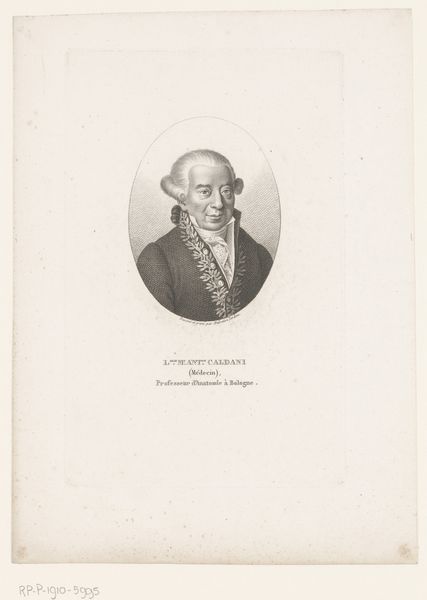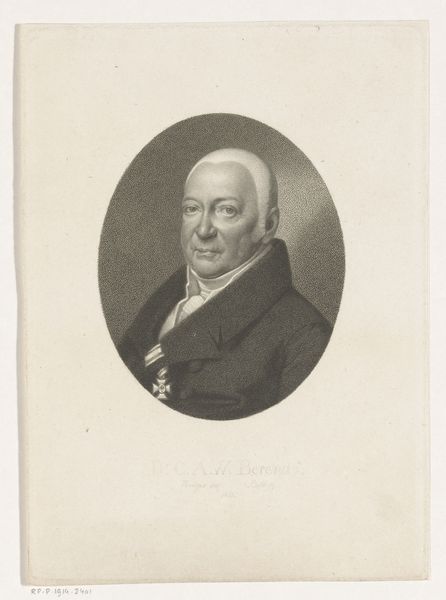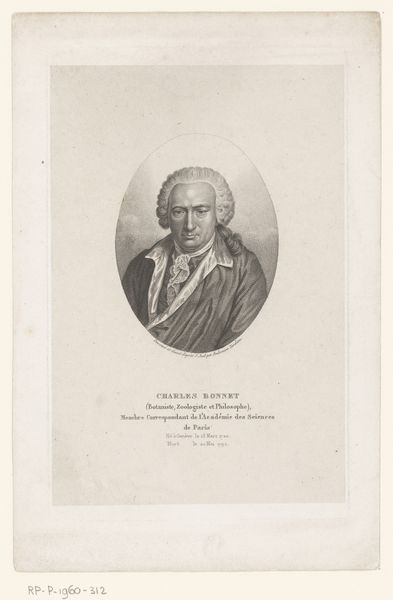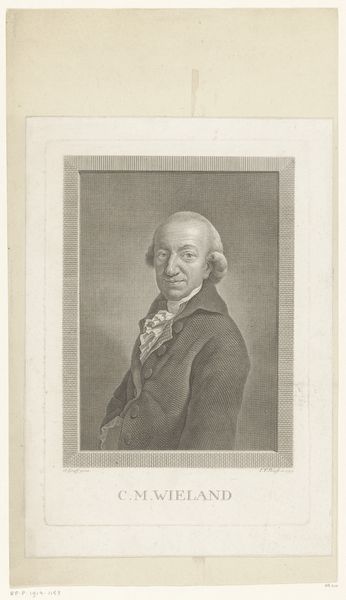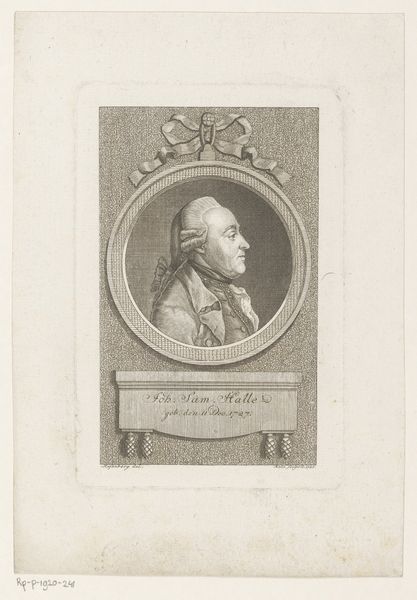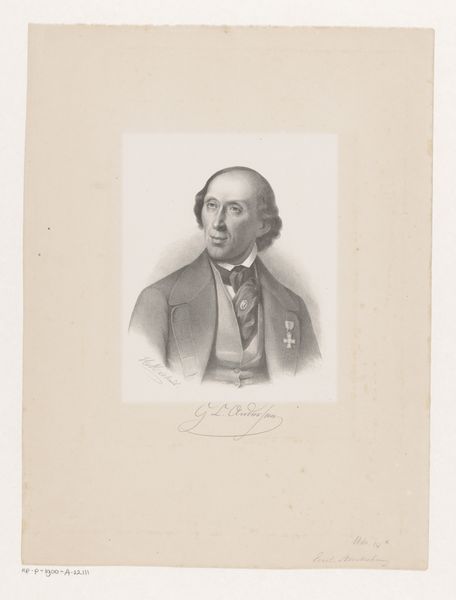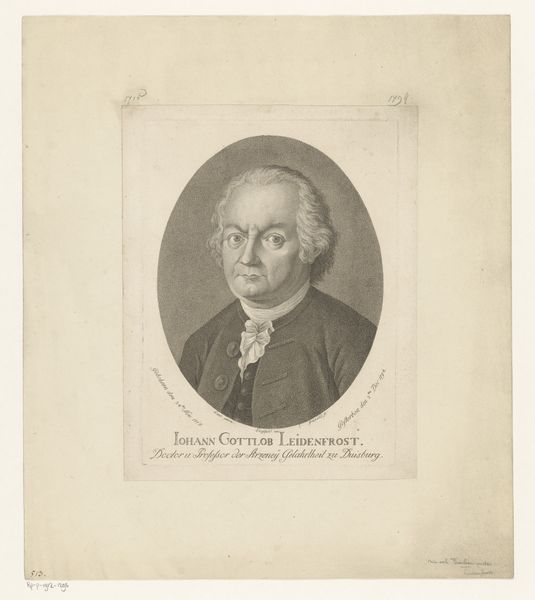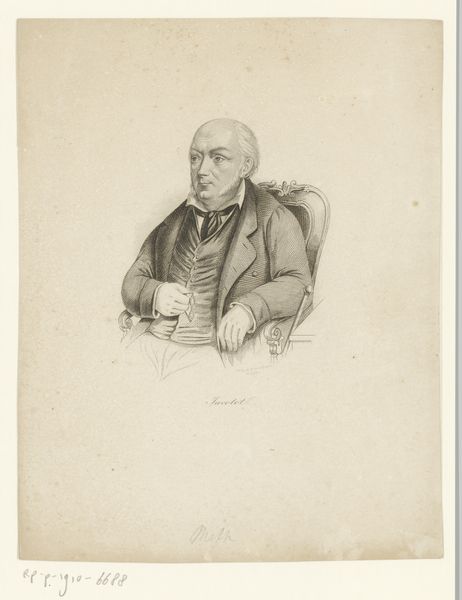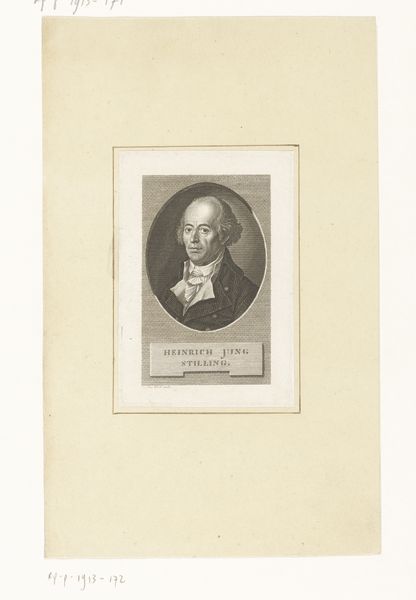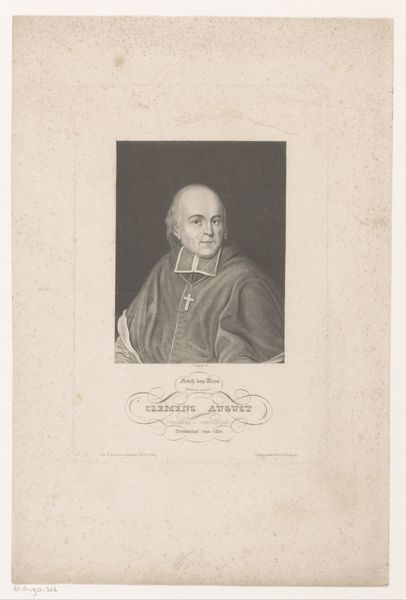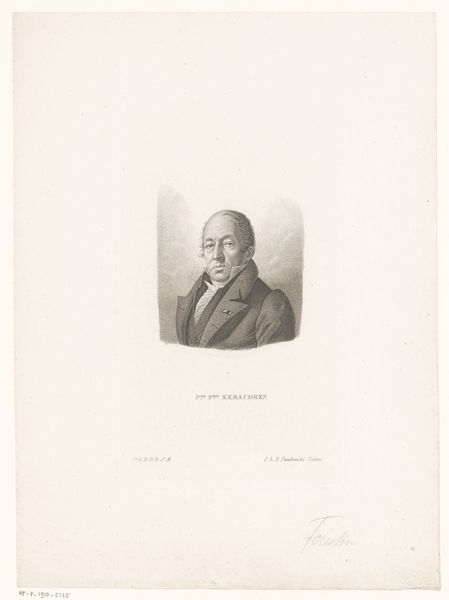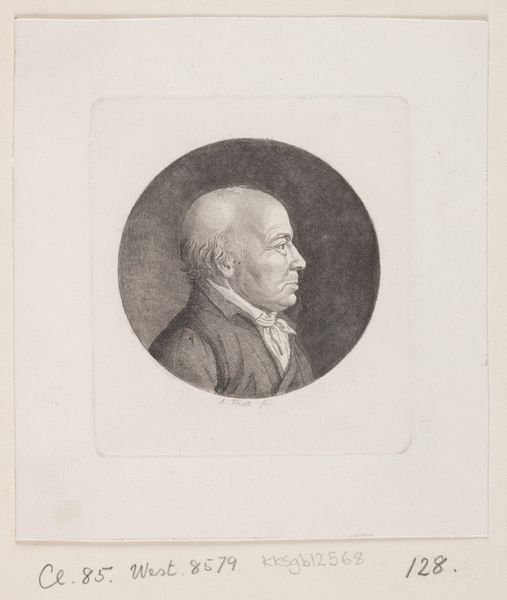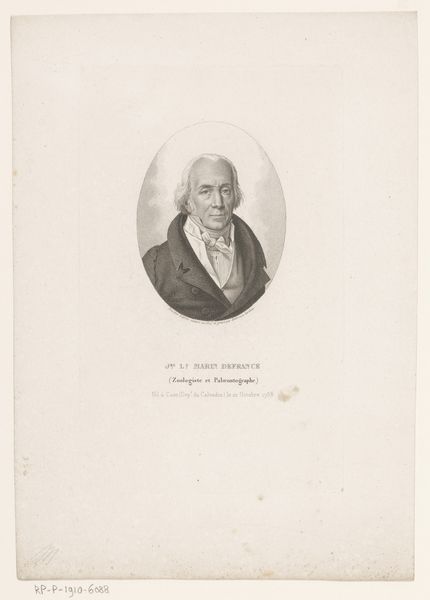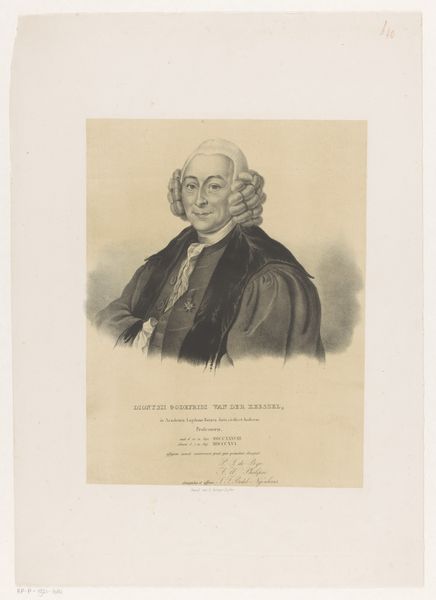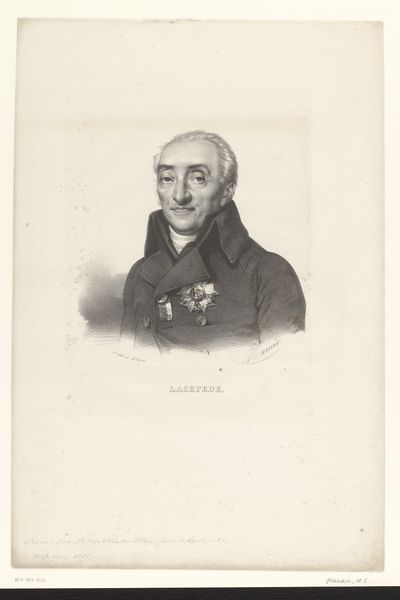
#
pencil drawn
#
light pencil work
#
photo restoration
#
pencil sketch
#
portrait reference
#
pencil drawing
#
yellow element
#
limited contrast and shading
#
portrait drawing
#
pencil work
Dimensions: height 215 mm, width 162 mm
Copyright: Rijks Museum: Open Domain
This is Julius Cäsar Thäter's portrait of Karl August Böttiger. Though the date of creation is unknown, we know that it was created sometime between 1804 and 1870. Notice the inscription: "MENS BONA, SI QUA DEA ES, VÉS ME IN SACRASIA CUNDO." It translates to "Good Mind, if you are a goddess, I will hide you in a shrine." How does that relate to the portrait? How does it illuminate it? Portraits are powerful tools that negotiate identity, status, and legacy, and they reflect the cultural values of their time. Consider the role of the sitter, Karl August Böttiger, a prominent archaeologist and classical scholar. How might his profession shape the way he wanted to be seen and remembered? The emotional resonance of this portrait lies in its quiet simplicity. The focus is on the intellectual rather than the physical, turning the portrait into a celebration of the mind. It also raises questions about the relationship between the individual and their intellectual pursuits. How do we reconcile our personal identities with our professional roles? This image serves as a gentle reminder of the enduring power of the mind.
Comments
No comments
Be the first to comment and join the conversation on the ultimate creative platform.
